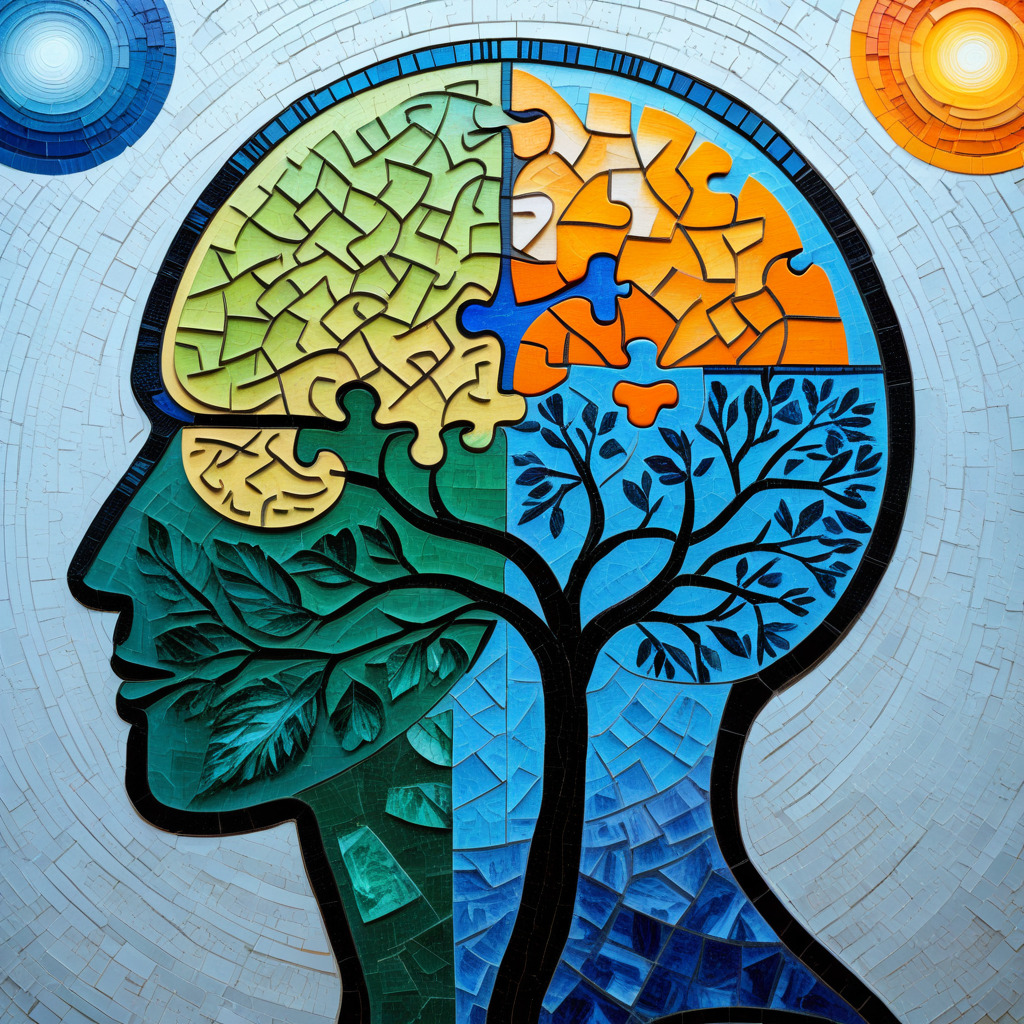A common question is, can a psychologist diagnose mental health conditions? Understanding the differences between psychologists, clinical psychologists, psychiatrists, and counsellors helps clarify who is qualified to diagnose mental health conditions and what their specific roles in the process.
Table of Contents
Understanding the Role of Psychologists in Diagnosis
Understanding the differences between psychologists, clinical psychologists, psychiatrists, and counsellors helps clarify who is qualified to diagnose mental health conditions and what their specific roles entail.
Psychologists are professionals trained in the science of human behaviour, emotions, and mental processes.
Clinical psychologists, a subset of psychologists, specialise in assessing, diagnosing, and treating mental health disorders. Clinical psychologists always hold a master’s degree, and receive specialised training to diagnose and often work in hospitals, private practices, or mental health clinics. The short answer is yes, clinical psychologists can diagnose mental health disorders.
Psychiatrists, on the other hand, are medical doctors who specialise in mental health. They are uniquely qualified to diagnose mental health conditions and prescribe medication, as their training includes both medical and psychiatric education. Psychiatrists often work in collaboration with psychologists and counsellors to provide comprehensive care, particularly for individuals requiring medication management.
Counsellors focus on providing support and guidance to individuals facing emotional, psychological, or behavioural challenges, but not diagnosis or therapy for mental health disorders. While they are trained to help with mental distress, they do not provide a diagnosis; rather, they refer to psychologists for diagnosis. Understanding these distinctions can help individuals seek the right professional for their needs.
Key Diagnostic Frameworks for Mental Health Disorders
Diagnosing mental health conditions relies on structured frameworks that provide standardised criteria for understanding and categorising disorders. One of the most widely used tools is the Diagnostic and Statistical Manual of Mental Disorders, Fifth Edition (DSM-5-TR). Published by the American Psychiatric Association, the DSM-5 organises mental health conditions into categories based on symptoms, duration, and functional impairment. Its primary purpose is to create a common language for clinicians, researchers, and educators, facilitating accurate diagnosis and effective treatment. However, the DSM-5 has faced criticism for its categorical approach, which some argue oversimplifies the complexity of mental health and may lead to overdiagnosis or stigmatisation.
The International Classification of Diseases, 11th Revision (ICD-11), developed by the World Health Organization, offers a global perspective on mental health diagnosis. While similar to the DSM-5 in many ways, the ICD-11 is broader in scope, covering both physical and mental health conditions. This framework is particularly useful in international settings and for health systems that rely on a unified coding system for billing and research. One key difference is the ICD-11’s emphasis on dimensional approaches, which consider the severity and context of symptoms rather than strictly categorising them. This can provide a more nuanced understanding of mental health conditions.
If we wanted to compare the two, the DSM-5 is more prescriptive in its criteria, while the ICD-11 offers broader definitions, allowing for greater flexibility in diagnosis. Psychologists can use either to diagnose mental health conditions.
In response to critiques of the DSM-5, alternative models have emerged to address its limitations. One such model is the Hierarchical Taxonomy of Psychopathology (HiToP), which shifts from a categorical to a dimensional framework. The HiToP model is data-driven and organises mental health symptoms into a hierarchy based on their severity and interconnectedness rather than separating them into distinct disorders.
This approach aims to better capture the complexity of mental health and reduce the overlap between diagnostic categories. While still evolving, the HiToP model represents a promising step toward more personalised and context-sensitive approaches to diagnosis. Understanding these frameworks helps professionals choose the most appropriate tools for their practice and highlights the ongoing evolution in the field of mental health diagnosis.
The Diagnostic Process
Psychologists use a systematic and thorough process to diagnose with accuracy and understanding of an individual’s unique experiences. Psychologists begin by gathering comprehensive information through interviews, observations, and, when appropriate, input from collateral sources such as family members, teachers, or coworkers.
This initial step helps create a holistic picture of the individual’s symptoms, history, and daily functioning. Clinicians pay close attention to the duration, frequency, and impact of symptoms to determine whether they align with specific diagnostic criteria.
The diagnostic process also involves ruling out other potential causes for the symptoms, such as medical conditions or environmental factors. This process is called differential diagnostics. For example, clinicians may consider whether a person’s fatigue and low mood could be related to a thyroid disorder rather than depression. This careful elimination of alternative explanations is a critical step in ensuring the diagnosis is accurate and tailored to the individual.
Use of Standardised Tools and Frameworks
To address the question, can a psychologist diagnose mental health disorders, it’s important to understand the tools and frameworks they employ. Psychologists rely on standardised tools and frameworks to guide the diagnostic process and maintain consistency across assessments. Structured interviews, such as the Structured Clinical Interview for DSM Disorders (SCID), provide a systematic way to evaluate symptoms and ensure that no critical details are overlooked.
Psychometric tests, including questionnaires and rating scales, are often used to measure the severity of symptoms and track changes over time. For example, the Beck Depression Inventory (BDI) can help assess the intensity of depressive symptoms and inform treatment decisions.
Importantly, tests and screeners in themselves are not sufficient for a diagnosis, and psychologists base their diagnosis partly on the results from these tools and partly on clinical interviews and observations.
Diagnostic frameworks like the DSM-5 and ICD-11 serve as essential references, offering clear criteria for identifying mental health conditions. These tools help clinicians differentiate between conditions that may share overlapping symptoms, such as anxiety and depression. While these frameworks provide a valuable foundation, professionals also use their clinical judgment to interpret the information within the context of the individual’s life.
The use of standardised methods ensures that diagnoses are reliable and objective while also allowing for flexibility to address the uniqueness of each person’s experience. By combining structured tools with a compassionate, individualised approach, clinicians strive to provide diagnoses that are both accurate and meaningful.
Methods of Assessment
Interview (Most Commonly Used)
The clinical interview is the cornerstone of mental health assessment and diagnosis, serving as the primary method for gathering information about an individual’s symptoms, history, and concerns. During the interview, the clinician engages in a structured or semi-structured conversation to explore the nature, duration, and impact of the individual’s experiences. This dialogue allows for a deep understanding of the person’s emotional state, thought patterns, and behaviours. Clinicians often use open-ended questions to encourage individuals to share their stories in their own words, fostering trust and rapport.
Psychometric Testing: Types and Applications
Psychometric testing involves the use of standardised tools to measure psychological constructs such as intelligence, personality traits, and symptom severity. These tests provide objective data that can complement clinical observations.
For example, the Minnesota Multiphasic Personality Inventory (MMPI) is widely used to assess personality and psychopathology, while the Wechsler Adult Intelligence Scale (WAIS) measures cognitive abilities. These tools are particularly useful for identifying patterns that may not be immediately apparent during an interview, such as subtle cognitive impairments or underlying personality traits.
Behavioural Observation: Importance in Clinical Settings
Behavioural observation involves systematically watching and recording an individual’s actions, interactions, and expressions in various settings. In clinical environments, clinicians may observe how a person behaves during sessions, noting aspects like body language, eye contact, and emotional reactivity.
This method is especially valuable for identifying discrepancies between self-reported symptoms and observed behaviours, such as when someone reports feeling calm but appears visibly agitated. Behavioural Observation is especially important for children and adolescents who may not have the language yet to fully express their mental state. Observational data can also provide insights into social skills, coping mechanisms, and interpersonal dynamics.
Collecting Collateral Information: Insights from Family, School, Friends, and Workplace
Collateral refers to information gathered from third parties, such as family members, teachers, friends, or coworkers, to gain a more comprehensive understanding of the individual’s functioning in different contexts.
For example, a parent might provide details about a child’s behaviour at home, while a teacher could share observations about their performance and interactions at school. In workplace settings, supervisors may offer feedback on an employee’s stress levels or job performance. Collecting collateral data helps clinicians identify patterns that may not be evident in a clinical setting alone, ensuring a more accurate and holistic assessment.
While collateral is often available for diagnostics in children, it is not necessarily practical for adults, even though it would be equally useful.
Do you or your loved one need some support? We are here to help!
Challenges and Considerations in Mental Health Diagnostic
The Continuum of Mental Health
Mental health disorders are not always best understood as binary conditions that one either “has” or “does not have.” Instead, many exist along a continuum, with symptoms ranging from mild to severe and fluctuating over time.
Many argue that no clear divisions are empirically supported between most mental disorders and normality, reflecting the complexity of mental health.
For example, anxiety or depression can manifest as occasional, manageable experiences for some, while for others, they may become debilitating. This dimensional perspective aligns with frameworks like the HiToP model and reflects the complexity of mental health, emphasising that individuals may fall at different points on a spectrum rather than fitting neatly into discrete categories. Recognising this continuum can help reduce stigma, encourage early intervention, and promote a more nuanced understanding of mental health experiences.
Validity and Reliability of Diagnoses
The validity and reliability of mental health diagnoses are central to their usefulness in clinical practice. Validity refers to the accuracy with which a diagnosis reflects the underlying condition, while reliability indicates the consistency of the diagnosis across different clinicians or settings. While diagnostic frameworks like the DSM-5 and ICD-11 aim to standardise criteria, challenges remain. For instance, some conditions, such as personality disorders, are harder to diagnose consistently due to their complex and overlapping symptoms.
Statistics on the Duration and Stability of Mental Health Diagnoses
Mental health diagnoses can vary widely in their duration and stability. Some conditions, such as schizophrenia or bipolar disorder, are often chronic and require long-term management. Others, like certain forms of anxiety or depression, may be episodic, with symptoms improving or resolving over time. Research shows that for some individuals, a diagnosis may change as symptoms evolve or new information emerges. For example, a person initially diagnosed with major depressive disorder might later be recognised as having bipolar disorder if manic episodes become apparent. This fluidity underscores the need for ongoing assessment and flexibility in the diagnostic process.
Ethical Considerations in Diagnosis
Diagnosing mental health conditions carries significant ethical responsibilities. One key concern is the potential for stigma, as labels like “depression” or “schizophrenia” can lead to discrimination or negative self-perception. Clinicians must balance the benefits of a diagnosis, such as access to appropriate treatment, with the risks of labelling. Another ethical issue is cultural sensitivity; symptoms must be interpreted within the context of the individual’s cultural background to avoid misdiagnosis.
Medicare and Mental Health Diagnosis
Medicare provides support for mental health services through initiatives like the Better Access program. To access subsidised mental health care, individuals typically begin by consulting their General Practitioner (GP) or psychiatrist, who can develop a treatment plan. This plan allows patients to claim Medicare benefits for sessions with qualified mental health professionals, including psychologists, clinical psychologists, and other allied health providers.
The diagnosis of a mental health condition is a critical component of this process. A formal diagnosis by a qualified professional, such as a GP or psychiatrist, is often required to establish eligibility for a Mental Health Treatment Plan. This diagnosis ensures that the treatment provided aligns with the individual’s specific needs and that the services rendered are appropriate for Medicare rebates. The diagnosis, from Medicare’s perspective, happens before seeing a psychologist by a GP. The psychologist then refines or clarifies the diagnosis.
NDIS Support and Diagnosis by a Clinical Psychologist
The National Disability Insurance Scheme (NDIS) in Australia provides support to individuals with significant and permanent disabilities, including those arising from mental health conditions, referred to as psychosocial disabilities. A diagnosis from a clinical psychologist can play a crucial role in establishing eligibility for NDIS support.
Many people wonder, can a psychologist diagnose mental health disorders? Clinical psychologists, a subset of psychologists, specialise in assessing, diagnosing, and treating mental health disorders. Clinical psychologists’ assessments are essential in determining the presence of a psychosocial disability, which the NDIS defines as a disability arising from a mental health issue that significantly impacts a person’s day-to-day functioning.
Please note that this blog post by Personal Psychology on the Lower North Shore providing therapy and counselling, and is not intended to provide professional advice. If you or someone you know is experiencing mental health difficulties, it is important to seek help from a qualified healthcare professional.





